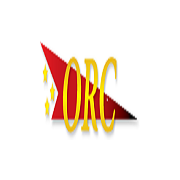INVESTMENT AND FINANCIAL MANAGEMENT
After a long research and experience, it's now clear that wrong investment decisions are made due to lack of information, advice and knowhow/knowledge. Returns are returns when factors inherent in that particular undertaking are clearly understood at all levels of operation otherwise your plan will be on trial and the possible negative impact will be huge.
You may be interested in these jobs
-

Systems Developer IV
Found in: beBee S2 KE - 3 days ago
Kenya Power Nairobi, Kenya Full timeABOUT THE COMPANY · Kenya Power owns and operates most of the electricity transmission and distribution system in the country and sells electricity to over 2.6 million customers (as at April The Company's key mandate is to plan for sufficient electricity generation and transmissi ...
-

Online writers
2 months ago
Direct apply
beBee Professionals Nairobi, Kenya Transcription (Edited, Intelligent, Verbatim, Phonetic) Freelance KSh30,000 - KSh40,000 per monthA private international organization (NGO) in partnership with the government has created new vacancies for graduates and undergraduates within Nairobi. Our company deals with Worldwide Business Inventions. · We are looking for ambitious and goal- oriented individuals to be par ...
-

IT analyst
2 months ago
Direct apply
beBee Professionals Nairobi, Kenya Load Testing Engineers Freelance KSh30,000 - KSh50,000 per monthA private international organization (NGO) in partnership with the government has created new vacancies for graduates and undergraduates within Nairobi. Our company deals with Worldwide Business Inventions. · We are looking for ambitious and goal- oriented individuals to be par ...
Comments
Samson Odipo
3 months ago #2
Understanding the Burn Rate
The burn rate is used by start up companies and investors to track the amount of monthly cash that a company spends before it starts generating its own income. A company’s burn rate is also used as a measuring stick for what is termed its “runway”—the amount of time that the company has before it runs out of money.
If a company has $1 million in the bank and spends $100,000 a month, its runway would be 10 months, derived as:
Total Capital ÷ Monthly Operating Expenses = Runway
In this case, that would be:
$1,000,000 ÷ $100,000 = 10 months
A company can reduce its gross burn rate by producing revenue and/or cutting costs, such as reducing staff or seeking cheaper means of production.
How to Calculate the Burn Rate
There are two types of burn rates: net burn and gross burn.1 A company’s gross burn rate is simply the total amount of operating costs that it incurs in expenses each month, expressed as:
Total Monthly Operating Costs = Gross Burn Rate
A company’s net burn rate, however, is the total amount of money that a company loses each month. This can’t be greater than the gross burn rate, but it can be less.
For example, if a technology startup spends $5,000 monthly on office space, $10,000 on monthly server costs, and $15,000 on salaries and wages for its engineers, its gross burn rate would be $30,000. However, if the company is also producing revenue, its net burn rate would be different, calculated as follows:
(Monthly Revenue - Cost of Goods Sold) - Gross Burn Rate = Net Burn Rate
Let’s say that the above company with a gross burn rate of $30,000 also has revenues of $20,000 a month from selling goods, and let’s put the cost of such items/goods to the company at $10,000 a month. The company’s net burn rate would be $20,000, derived as:
($20,000 - $10,000) - $30,000 = -$20,000
Even if the company is spending $30,000 every month, the actual amount it is losing per month is only $20,000. This is an important distinction, because it alters the financial runway. If the company had $100,000 in the bank, its runway would be five months rather than three months. The longer stretch of time will affect both how the managers outline the company’s strategy and the amount of money to invest.
If the burn rate begins to exceed its forecast, or if revenue fails to meet expectations, the usual recourse is to reduce the burn rate, regardless of how much money is in the bank. This requires rethinking the startup’s cost structure and usually means reducing staff and/or other major cost drivers, such as office lease, technology, and marketing.
What is a good burn rate?
The general recommendation is for a startup business to have six to 12 months of expenses on hand.2
If the company has $100,000 in the bank, a good burn rate would fall between $16,667 (six months) and $8,333 (12 months).
How do you calculate the burn rate?
There are two kinds of burn rates: gross and net. The gross burn rate is simply the total amount of money spent each month. The net burn rate is the amount of money lost each month and takes into account any possible company revenue. It is calculated using the following formula: (Monthly Revenue - Cost of Goods Sold) - Gross Burn Rate = Net Burn Rate.
Is burn rate the same as expenses?
Yes, if you are calculating the gross burn rate. However, if you want the net burn rate, you must also factor in whatever revenue the company may be generating.
The Bottom Line
The burn rate is an important metric for any company, but it is particularly important for startups that are not yet generating any revenue. It tells managers and investors how fast the company is spending its capital. The burn rate is used to determine when a company will begin going in to debts, expressed as the company’s financial runway. If a burn rate is too high, a company has no choice but to lower its structural costs by reducing what it is spending on staff, housing, marketing, and/or technology.
Samson Odipo
3 months ago #1
Consultancy is a great stride toward achievement of solutions